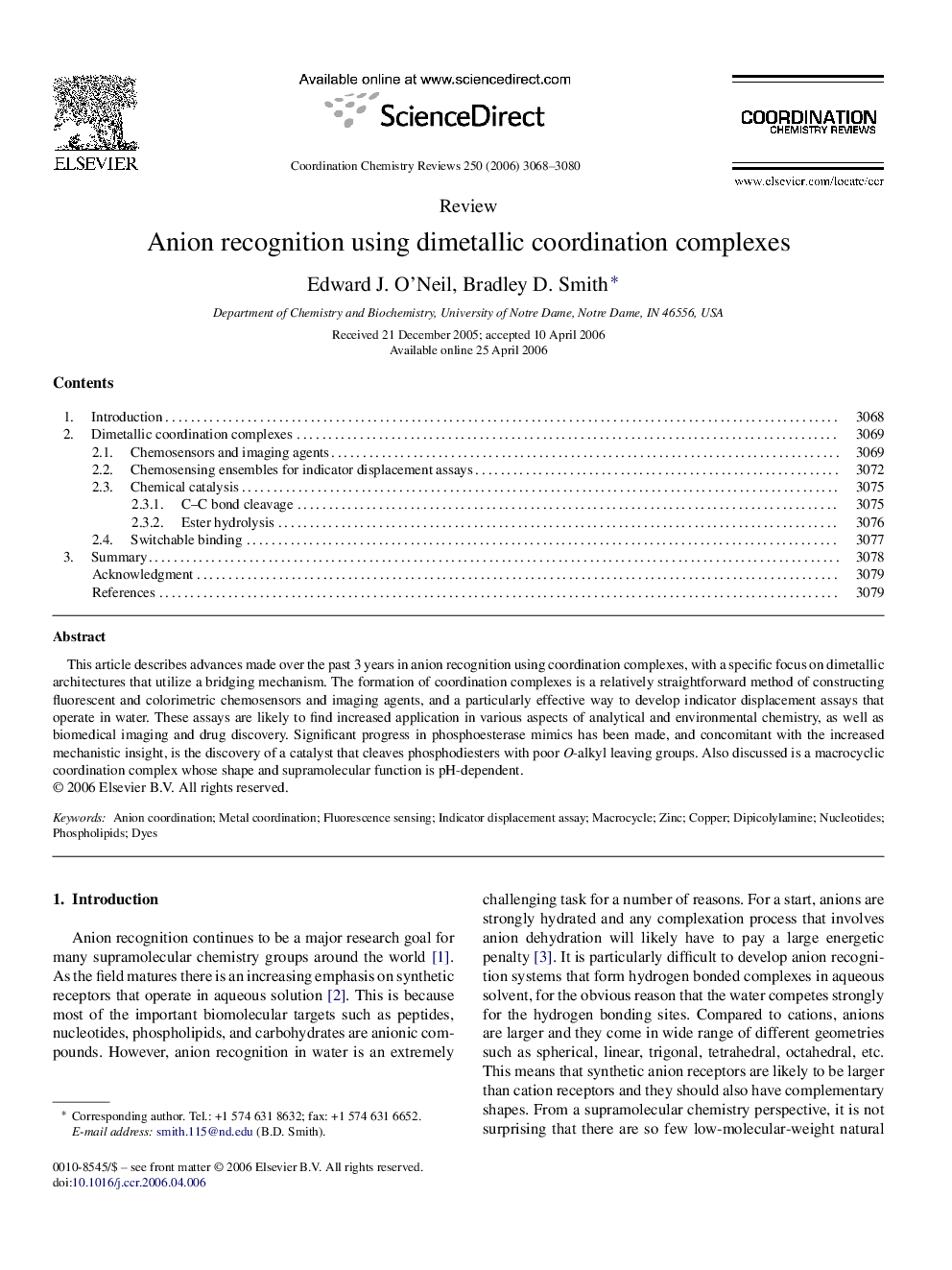| Article ID | Journal | Published Year | Pages | File Type |
|---|---|---|---|---|
| 1301444 | Coordination Chemistry Reviews | 2006 | 13 Pages |
This article describes advances made over the past 3 years in anion recognition using coordination complexes, with a specific focus on dimetallic architectures that utilize a bridging mechanism. The formation of coordination complexes is a relatively straightforward method of constructing fluorescent and colorimetric chemosensors and imaging agents, and a particularly effective way to develop indicator displacement assays that operate in water. These assays are likely to find increased application in various aspects of analytical and environmental chemistry, as well as biomedical imaging and drug discovery. Significant progress in phosphoesterase mimics has been made, and concomitant with the increased mechanistic insight, is the discovery of a catalyst that cleaves phosphodiesters with poor O-alkyl leaving groups. Also discussed is a macrocyclic coordination complex whose shape and supramolecular function is pH-dependent.
Graphical abstractFigure optionsDownload full-size imageDownload as PowerPoint slide
